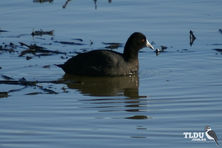
Shoppers Feedback:
Jan 17, 2017
Hello Ros,
I have now paid the invoice, but I would like to write to you just to say a big THANK YOU for getting me the Penguin!
The ChatterMate Penguin became a nice memory for me when I was in New Zealand, and I am so greatful to you for arranging so that I could have it! :-)
Thank you so much!!!!!!!!!!!
Regards,
Malin
Hi Ros,
Many thanks for your very kind email. I really appreciate your prompt reply!
I appreciate your advice regarding the decorations and customs. These are a gift for my daughter’s exchange student family so when she returns home on the weekend I will show her and see if she loves them as much as I do!
Thanks so very much again - I am truly grateful for your kind assistance.
Kind Regards
Bernadette
Ros,
Thanks again for the great customer service. It's a refreshing change!
Best regards,
Trevor
Hey Roz,
Thank you for your emails. Just loved my first order. The cute little Aussie bush critters are going to be used for an office Christmas decoration. My colleagues also liked them and talked about making an order to your site. I'll send you a photo when completed.
I'll be ordering more to send to my daughter's host family in America.
Fabulous service from you.
Kind regards,
Michelle
Thankyou. Order arrived today. One very happy grandson with his new beastly binoculars.
Regards,
Irene
- Home
- Wild Wonders
- Shop
- Aromas of Australia
- Australian Made
- Books
- Book Marks
- Christmas Decoration Sale
- Christmas Decorations
- Clocks
- Drink Holders
- Garden & Outdoor
- Gift Wrapping & Cards
- Home & Giftware
- Jewellery
- Keyrings
- New Products
- Pencils & Pen Holders
- Photo Frames
- Plush Toys
- Plush with Sound
- Sheepskin Rugs
- Stationery
- Stone Carvings
- Toys & Games
- Travel Goods
- Wedding
- Wild Figurines
- Wildlife Safety Products
- Wind Chimes
- Wine Charms
- View All Products
- Wildlife
- Australiana
- Explore
- Contact Us
Eurasian Coot

Quick Facts
| Length: | 32 cm |
| Height: | - |
| Weight: | - |
| Colour: | Snowy white bill and forehead shield. Dark sooty grey body |
| Habitat: | Vegetated lagoons and swamps |
| Food: | Vegetable matter, supplemented with a few insects, worms and birds |
| Predators: | - |
| Status: | Secure in all states and territories in Australia |
The Eurasian Coot is recognised by its snowy white bill and forehead shield. The remainder of the bird is dark sooty grey, except for its bright red eye. Immature birds are generally paler than adults with a white wash on the throat. Nestlings are downy, black with fine yellow tips. The head is orange-red and the bill is red with a cream-white tip.
The only bird with which the Eurasian Coot can be confused is the similarly sized, dark grey Dusky Moorhen. These species are often found together, but the Dusky Moorhen has a reddish-orange head shield and bill, with a yellow tip.
The Eurasian Coot ranges from Eurasia to Indonesia, New Guinea and Australia.
In Australia the Eurasian Coot is common in suitably vegetated lagoons and swamps. Birds are less common in the north and in the drier regions.
Food is mainly obtained during underwater dives, lasting up to 15 seconds and ranging down to 7 m in depth. Birds also graze on the land and on the surface of the water. In Australia, Eurasian Coots feed almost entirely on vegetable matter, supplemented with only a few insects, worms and fish. Birds of the northern hemisphere tend to take much more animal prey.
Eurasian Coots may breed at any time that conditions are favourable, and may produce successive broods. During the breeding season pairs establish and maintain territories with vigour. Their aggression is also extended towards other species. Nests of ducks are often seized and used as roosting sites, the unfortunate owner's eggs being pushed off into the water. Young ducks and grebes are sometimes killed. The nest is often a floating raft of vegetation or is built on logs or tree stumps that are surrounded by water. Both sexes share incubation and care of the young. If food becomes scarce, the young birds may be killed by the parents.
Last Updated: Wednesday 17th July, 2013
BUSH e-TELEGRAPH
Signup for our monthly newsletter the "e-Telegraph"
Quick Links
Home | The Beginning | About The Land Down Under | Wild Wonders | Advertise on Wild Wonders | Christmas Decoration Sale | Christmas Tree Decorations | Drink Holders | Plush with Sound | Stone Carvings | Wildlife Wine Charms | Freebies | Australian Wildlife | Help Our Wildlife | Australiana | Photo of the Month | Explore The Land Down Under | Contact Us | Legal Notices

